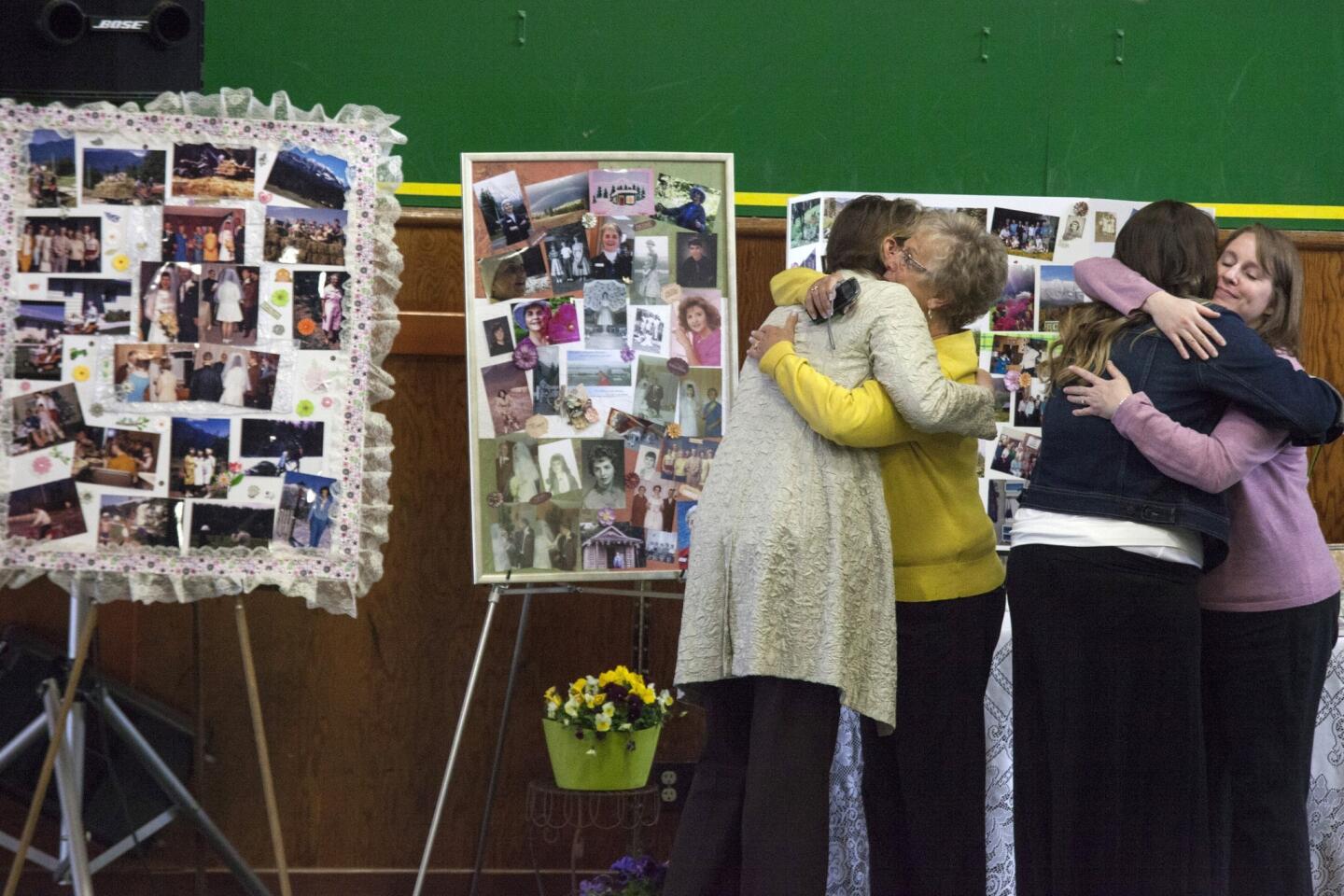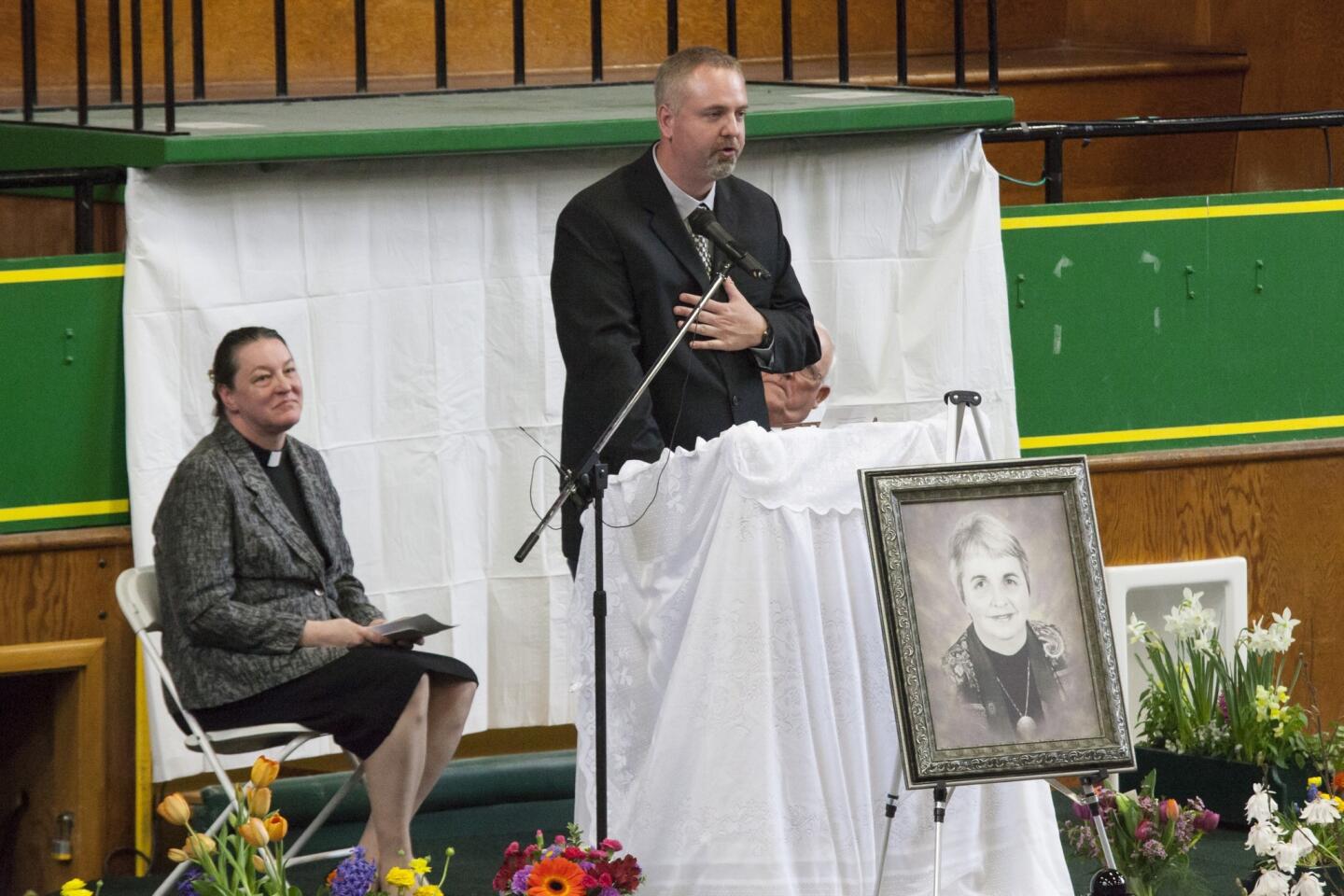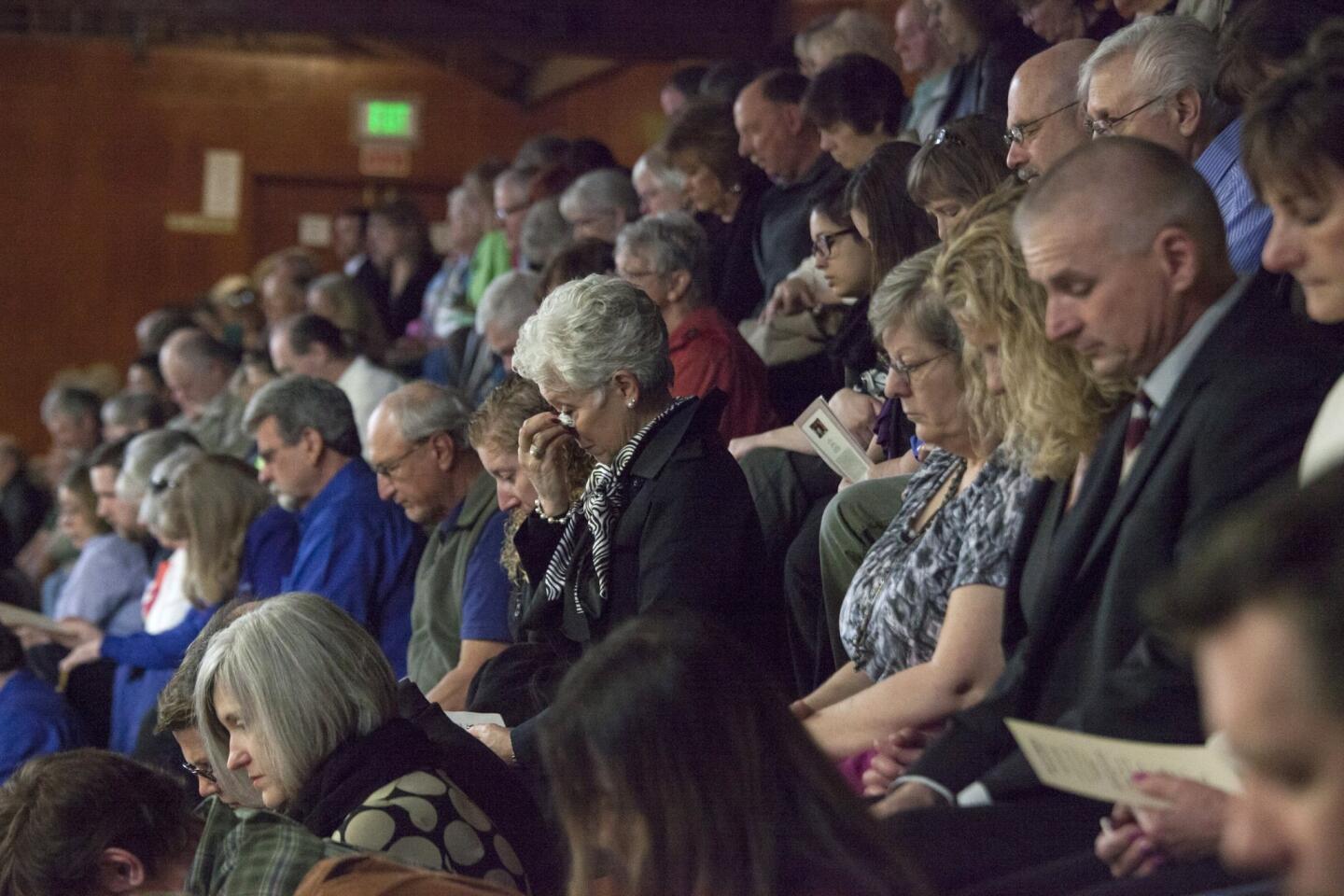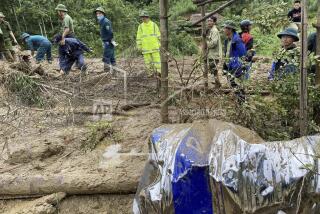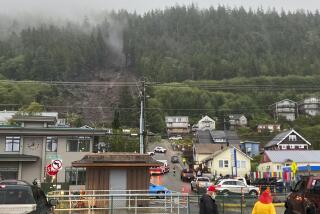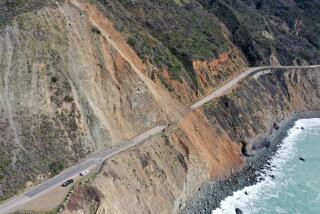Linda McPherson, other landslide victims, memorialized in Washington
A retired librarian became the first of the at least 30 people killed in last month’s landslide in Washington to be memorialized as several hundred people gathered to remember her life Saturday afternoon.
Two weeks ago, Linda McPherson was reading a newspaper alongside her husband of 46 years when, in a quick blast of mud, she was killed at the age of 69. Gary McPherson was left injured in a freezing pile of the muck.
Rescuers haven’t abandoned the Snohomish County town of Oso. Thirteen people remained missing as of Saturday night. Thirty bodies had been recovered, of which 29 have been identified; the names of 28 have been released.
WHO THEY WERE: Victims of the Oso landslide
Funerals for two other victims were held Saturday, after a prayer service Friday night in Arlington. They were followed by a candlelight vigil Saturday night in Darrington.
On March 22, a pair of landslides collapsed about 10 million cubic yards of weak rock and dirt from a 600-foot-tall hillside. The debris traveled about seven-tenths of a mile across a river, the U.S. Geological Survey said.
“This travel distance is about three times longer than expected based on published information regarding previous slides of this height and volume worldwide,” the USGS said in an online post. “If the landslide had behaved in the expected range, it would have likely blocked the river and possibly destroyed a few houses. Instead it led to tragic loss of life and destruction of property.”
The ground was already saturated by months of rainfall nearly double the average. The suddenly extra-wet mixture flowed across dozens of structures, destroying most of the rural community northeast of Seattle. About $10 million worth of property was gone in seconds, the state said this week.
Experts have said that the slurry of rock, water, mud and trees could have been moving about 20 mph, making it impossible to outrun.
The composition of the debris flow was similar to the one associated with the Mt. St. Helens eruption in 1980, the USGS said. That landslide was the largest in U.S. history, traveling 14 miles, and part of Washington’s second-worst natural disaster. Fifty-seven people were killed as result of the eruption’s effects.
In Oso, the search for bodies involves 450 people and has been challenging in part because of worry about contamination and further slides, though no major issues have been found.
Areas marred by spilled fuel and pesticides have to be cleaned up. The community had about 50 septic tanks that may have ruptured. Scientists are also monitoring the fragile hillside, wells and fish in the river, which has started to cut a new path at the foot of the hill.
Officials expect a quarter of an inch of rain Sunday. But the forecast calls for two weeks of sunshine after that, which should aid search efforts.
Snohomish County officials said Friday that a process would be established to let families get items from their homes that have been found in the mud. Debris removal is expected to cost at least $22 million, the state said this week.
Follow LATimes National on Facebook
ALSO:
Family, friends recall lives of 3 killed in Ft. Hood shooting
Driver in Chicago train crash fired; minimum rest limits imposed
Atlanta archbishop to move out, sell his new $2.2-million mansion
More to Read
Sign up for Essential California
The most important California stories and recommendations in your inbox every morning.
You may occasionally receive promotional content from the Los Angeles Times.
